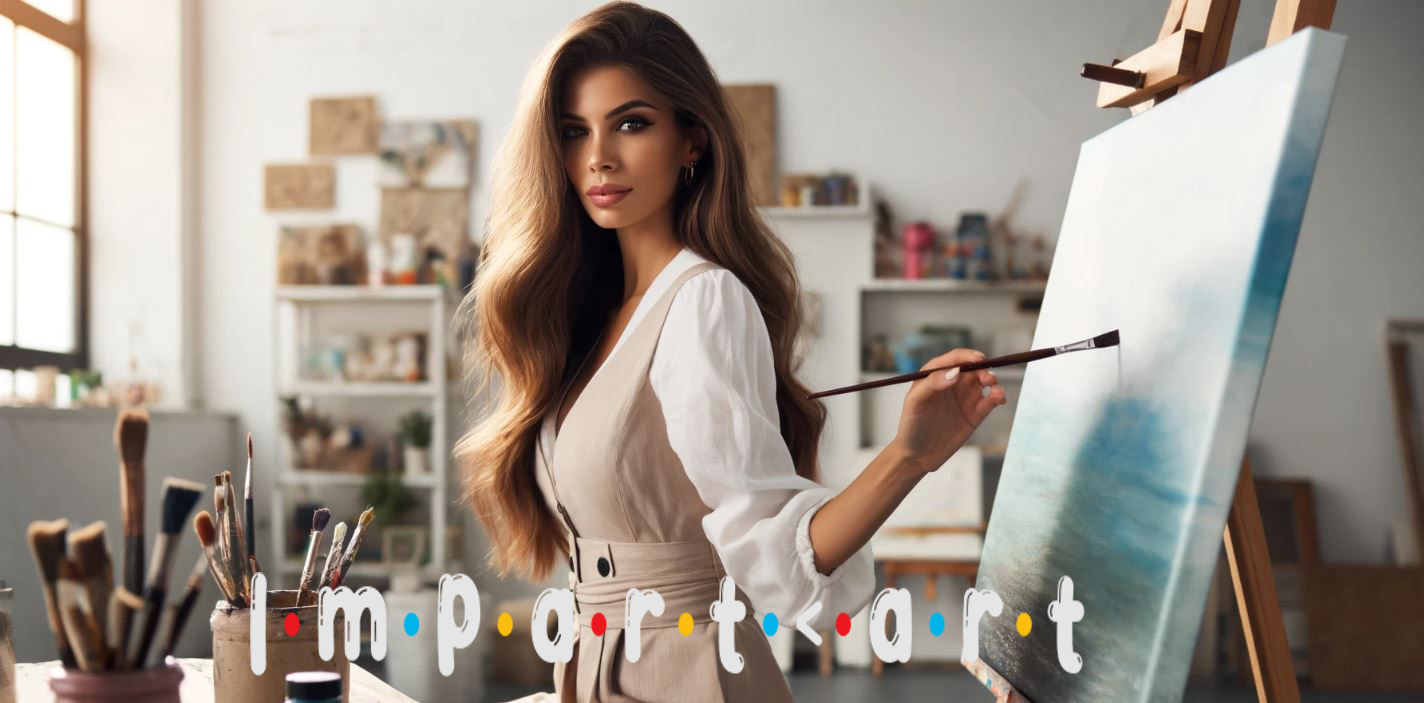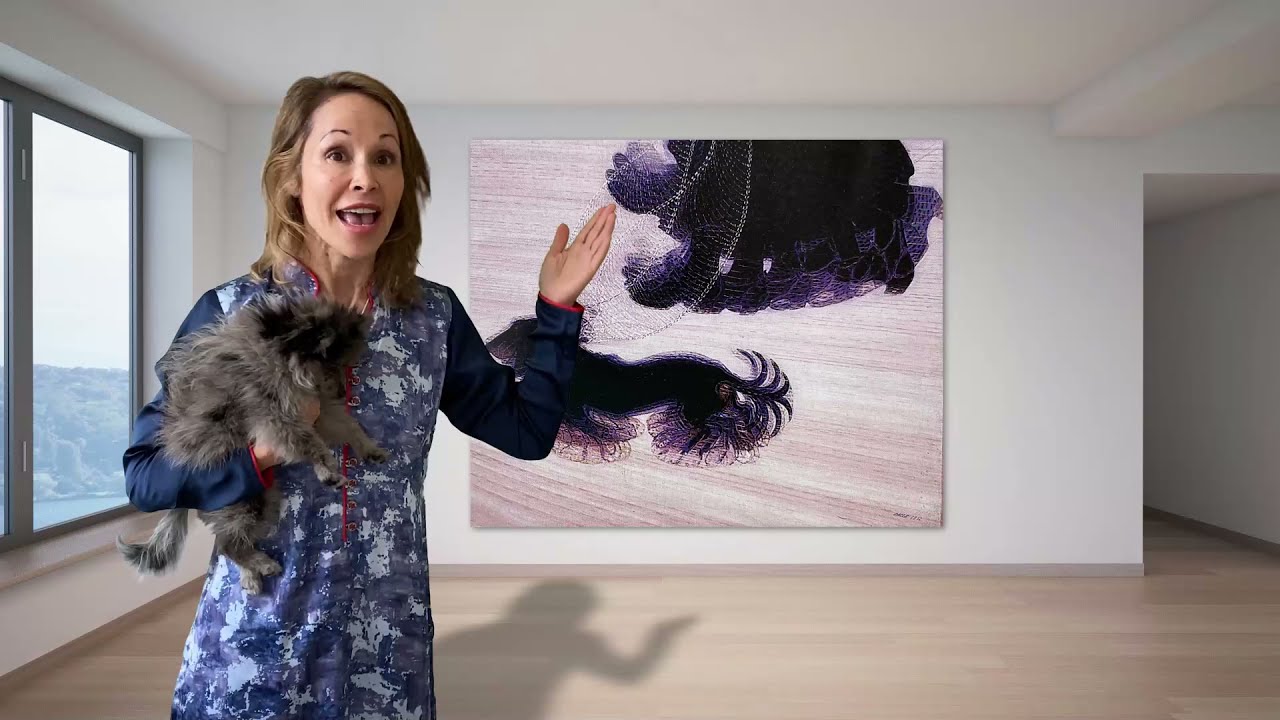What Not To “Don’t Do” Before Buying A Oil Painting Kit For Beginners “Learn From My Mistakes”
My name is Dayana Fuentes, and I have to confess that my first contact with oil painting began in a very picturesque and unexpected way, “Trying to buy my painting kit for beginners. It all started in the labyrinthine aisles of an art store, a place so enigmatic with tubes of paint and brushes that it looked more like a magician’s closet than a store.
Wings of Curiosity and Ignorance

That first day, I walked in with my eyes as wide open in curiosity as they were closed in ignorance, facing an endless array of materials that was both intimidating and alluring. Without a clue, I was about to board a creative flight that would not only clear the skies of my routine, but redraw the map of my days to the present.
Mistakes & Enthusiasm Of a Rookie
As a beginner, I dove into the ocean of art with the tread of an elephant in a glassware store. I bought all sorts of unnecessary paintings, some probably destined for science projects rather than the canvas, and filled myself with books that promised to transform me into the next Picasso before I could say “Cubism.”
From brushes with sable hair to an easel that, I swear, was personally carved by Michelangelo, to an apron that looked like something out of a Parisian fashion show! And yes, none of it was essential.
Well, for now…..

Between Humor and Perseverance
Undoubtedly, my efforts were more comical than artistic, and every mistake came with a price that my wallet watched in terror. However, every brushstroke and wrong action was a lesson learned, and although my pocket suffered, my artistic soul encouraged me to continue making the worst paintings in history hehehehehehehehe….
Create And Enjoy With Little Money
My goal with you will not be to create a masterpiece, but to show you that you can start painting with a small budget and still enjoy every brushstroke, every mix of colors, every moment of inspiration.
Without further ado, buckle up and let’s build your best together oil painting kit for beginners.
Table of Contents
- What Not To “Don’t Do” Before Buying A Oil Painting Kit For Beginners “Learn From My Mistakes”
- Basic And Optional Elements For Oil Painting Kit For Beginners.
Basic And Optional Elements For Oil Painting Kit For Beginners.
Oil Paint

Option #1 The Advantage of Buying a Set
Buying a set of oil paints is the wisest decision you can make. Not only is it more economical than buying individual tubes, but it also saves you the existential dilemma of choosing between a cobalt blue and an ultramarine blue.
The starter sets come with a ready-made selection of colors that keeps you from feeling like a lost child in an amusement park, unable to decide between so many options. In the end, it’s a simple way to start painting without indecision taking the brush out of your hands.

The Quality-Price Balance
When it comes to paints, well-known brands such as Winsor & Newton have options for both students and professionals. Buy the student-grade ones, as they are less expensive. Sure, they have less pigment and lower quality, but who would notice? At least I didn’t, while learning basic techniques.
So there I was, happily painting with my student paints, while dreaming of being someone proficient with a paintbrush!
Option #2 If You Venture to Buy Individual Tubes…. Don’t worry, I’ll Guide You !
While it may be tempting to want to buy all those beautiful tubes of paint, let me let you in on a secret: Most of the shades you see can be created from a few basic colors. So before you start collecting colors like soccer cards, here’s what I suggest and avoid an unnecessary parade of tubes in your newly created studio.
Essential Colors
To begin with, it is enough that you have the primary colors: Blue, yellow and red. With these, along with black and white, you can mix and get almost any shade you need.
Titanium White:
This is an essential color that you will use in many blends, so I recommend buying a large tube. Fortunately, titanium white is not an expensive color.

Cobalt blue:
This is one of the most neutral and versatile blues in artistic painting, which makes it ideal for beginners.


Cadmium Red:
Crucial in oil painting for its intensity and opacity, allowing the creation of contrasts and realistic details. Its chemical stability ensures durability and color vibrancy in works of art over time. Key in your first Oil Painting Set


Advantage and Disadvantage Of Buying Individual
It’s true that at first, seeing the price of each tube of paint may make you break out in a cold sweat and think about taking up gardening instead of art. But think about it: Starting with those basic colors is like building a good closet for your art studio. You’re building a solid foundation for your creative practice, avoiding the mess of having a whole carnival on your palette that you don’t even know how to use.
Little by little, you will learn to mix and master a rich and varied palette, and you will be able to explore your creativity with confidence. Come on, those tubes are an investment in your Picassian future!
The Freedom to Fail Don’t Be Stingy!
Allow yourself not to worry about wasting paint. Give yourself permission to experiment and even painting the ugliest paintings ever is crucial to your artistic progress. I started with student grade paints and gradually added professional grade paints to see the difference.
The Importance of Pigment
Pigment quality makes a big difference, it’s like that old saying, “cheap is expensive”. With medium quality paints, not only do you get more vivid and consistent colors, but the paint is also likely to behave better on your canvas, blend better and last longer.
The Brushes

Choosing brushes can seem like a puzzle at first, especially with so many varieties tempting you from the store shelves. But relax! I’m here to make your life a little easier. You’ll see brushes of all kinds: round, flat, cat tongue-shaped (Yes, that exists), and many more. Each has its own special purpose. But, as a beginner, don’t worry too much. Don’t let the choice of a brush steal your sleep or take away your desire to start painting.
I suggest buying in sets, they are not that expensive and will make your life easier!
Natural:
Traditionally used in oil painting, these brushes are stiffer and leave visible and expressive marks in the paint. They are excellent for handling the dense textures of oil paint, as they absorb the pigment well and leave those beautiful marks on your work. If you can afford it… Buy them !


Spatula Set


The Indispensable Multi-Tool
The palette knife is the “Swiss Army Knife” of art! This tool not only applies paint and creates unique effects, but also mixes colors with the skill of a master chef.
Its ease of cleaning with a simple piece of paper makes it the hero of hygiene in your studio: Use, clean, and repeat without messing up your mixes.

#Tips: Choose Paint Mixing Spatula To Avoid Unnecessary Wear and Tearing
Dear newbie using brushes to mix paints is like wearing sunglasses at night: it doesn’t make much sense! Save your brushes and your wallet suffering by choosing a small spatula. Why let your brushes die young, worn out and full of paint, when a spatula can do the job better and keep them fresh and ready.
The Palette

There are a wide variety of paint mixing paddles available in the market, available in different sizes, materials, and shapes. Common options include plastic, acrylic, MDF and disposable paddles.

My Personal Choice: The Crystal
I prefer to use glass as a surface for mixing paints. This surface is, without a doubt, the best I have used to date, especially oil paints. But I warn you, this option is expensive…
#Tips For Crystal Palette:
If you decide to use glass and your budget allows, it is advisable to paint the bottom of the glass a neutral color. This will prevent you from seeing through the glass, which can interfere with how you perceive the colors you are trying to mix.

Disposable Pallets:
They offer a practical and efficient solution for artists who paint with oils. These palettes are available in materials such as plastic and paper, each with its own advantages.
Plastic
Plastic pallets are especially appreciated for their ease of cleaning and are very inexpensive. They can be cleaned with a solvent after use, which allows them to be reused a couple of times before disposal.
On the other hand, they are a little less environmentally friendly compared to paper ones.



Paper
In contrast, paper pallets are valued for their convenience and low environmental impact. These palettes usually come in blocks with multiple coated sheets, which can be discarded after each painting session, avoiding cleanup. This feature makes them ideal for artists who want to maintain a clean working environment or who paint outside the studio. “They are very inexpensive.”

Improvised Palette! They’re Free!
Get creative with what you already have at home for your mixes! Unused plates, refrigerator trays or acrylic sheets. They are practical and free, ideal for you who are just starting out.
¡Who needs to buy when you can recycle and be an artist at the same time!

Easel or Lectern

Using an easel or table stand is not vital, but come on, it makes your life easier when painting! It allows you to place the canvas at your ideal height and right in front of you, as it should be. This way you avoid those visual deceptions and those annoying reflections of the overhead light, typical when you rest your work on the table.
Art at the Comfort of Your Work Desk
The easel I use is one of those table-top ones and, mind you, it folds up! This allows you to play that it is a standing easel while you are comfortably seated. In addition, it comes with a drawer where you can store everything: brushes, paints, and those accessories you can’t live without. It’s super comfortable, I love it! I love it …


Support Canvas

Various Surfaces
Nowadays you can paint on practically anything. Whether it’s wood, paper, cardboard, even metals like copper, aluminum, and let’s not forget glass! But first you must make sure that each surface is well prepared with a good coat of acrylic primer (acrylic plaster). Otherwise, your work could end up being more ephemeral than a political pledge.”
Many artists enjoy preparing their own canvases, especially when seeking to apply specific techniques. Although customizing a canvas for a particular technique may require more time, effort and knowledge. As a beginner, I recommend you consider the following options:

Canvas Pad
Ideal for beginners, measuring 16×20 inches, it is a manageable size. This format contains multiple sheets that allow you to discard the first less successful paintings.
Being in learner mode, repetition is key; if a piece doesn’t go well, simply discard it, turn the page and continue practicing.

Prepared Canvases
Once you feel more confident, you could try Ready-Made Canvases. These panels come ready to use, which makes them quite practical, especially if you consider that they don’t require sealing or priming like wood. Plus, they have the advantage of being inexpensive, and you can easily find them in low-cost stores, so they’re a good option to give it to you without the hassle!
Types:
You can choose between thick-edged (3D) canvases, which do not need a frame and are finished by painting the edge, or thin-edged canvases that are easy to frame.
This prefabricated option is practical and allows novice artists to concentrate on developing their painting skills without the additional worry of preparing canvases.


Mediums

In oil painting, “Mediums” are substances added to paints to alter their consistency, fluidity and drying time. These include oils, resins and solvents, each with distinct properties that influence the behavior of the paint.

Oils: Improves Fluidity and Durability
Among the most common oils are linseed oil, walnut oil and poppy seed oil. These oils not only facilitate better paint application because of their ability to make the paint flow more smoothly, but also extend drying time and increase the durability of the work. In addition, they can give a glossier and more transparent finish to the paint.
Linseed oil has been my choice for several years. Its consistency improves paint handling, providing a smooth finish and allowing very thin coats to be applied efficiently.

Synthetic Mediums
Accelerates drying and enhances color: A prime example is the Lichen made by Windsor & Newton, prized for accelerating drying and enhancing gloss.
This medium is ideal for those who wish to add multiple coats without long waits. It also improves the viscosity of the paint, making it easier to apply when the paint is too thick.
This medium can be a luxury for a beginner, but I still leave it to you. It is optional !



Solvents or Diluents
Odorless mineral spirits are a safe and effective alternative for cleaning brushes and thinning paints without the intense odors of traditional turpentine. This solvent, distilled from petroleum and treated to remove most of its odorous compounds, is less intense and more tolerable in enclosed spaces.
Solvents are the equivalent of a professional cleaner in your studio! Use them with caution and in ventilated areas as they are slightly toxic.

“Art brings joy and who doesn’t want a little more of that? If this article opened the doors to the wonderful world of oil painting for you, please share it and don’t forget to follow our Facebook page. If you’re curious or have ideas for more artistic adventures, leave your thoughts in the comments.
Through my words, I hope to encourage you to smudge a little paint here and there, embracing both the art and its infinite possibilities.






